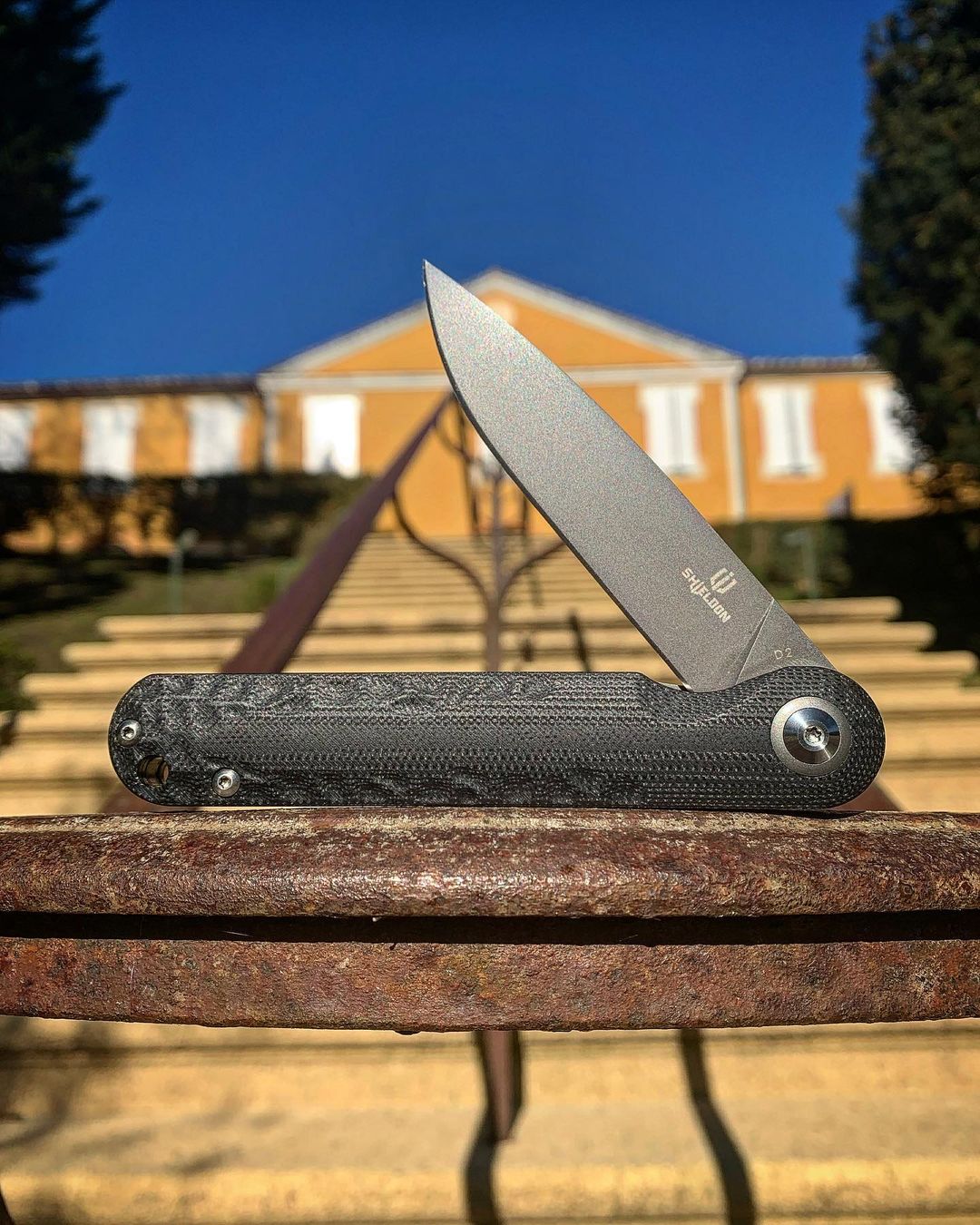An Ultimate Guide to Knife Handles
Every discussion that involves knives usually centers around blades, mostly because they are the parts that do most of the work. However, the handle of the knife is equally important; in fact, that knife would be useless or hard to use if the handle didn’t exist. That’s how vital it is to the entire tool.
For as long as knives have existed, they have always spotted all types of handles. Most are for decorative purposes while others are made to increase the efficiency of the entire tool.
To better illustrate how important the knife handle is, we are going to explore all the materials that are used in their construction and how each affects how the knife performs, among many other aspects. If you have been thinking of getting that hunting knife, maybe hold off a little until you reach the end of this article.
Stainless Steel
Stainless steel is the most popular knife handle material and is loved by many people for many reasons. For starters, it is one of the hardest metals around. Having a knife handle ensures that you use it for a very long time without ever needing replacements. It is also resistant to corrosion and rust on top of being lightweight, depending on the design that the knife maker chooses to go with.
However, stainless steel can be a little slippery, and that can cause problems when it comes to handling. To counter this, many steel handles come with notches and ridges to enhance the grip. Others are equipped with rubber linings to make it easy for the user to hold.
Pros
- Strong
- Durable
- Corrosion-resistant
Cons
- Slippery
- Can be heavy
Aluminum
Aluminum is preferred over many other metals for knife handles for three main reasons; It is cheap, has very good hardness, and can stay for a very long time without developing any complications. Aluminum is a low-density material that gives the user a nice and hefty feel to the knife without adding unnecessary weight to it. One of the most common aluminum variants used for knife handles is called the T6-6061 Alloy, which is known for its impressive tensile strength.
Aluminum is also well textured and provides a very good grip when some ridges and notches are added. It also works very well when combined with other materials like rubber for an extra grip. The only downside is that it becomes very hard dealing with it when winter comes knocking due to its high conductivity.
Pros
- Strong
- Lightweight
- Resistant to corrosion
Cons
- It can get very cold
- Slippery
- Susceptible to scratches
Titanium
Titanium is a rare metal, and knives that spot this for their handles don’t come cheap. It is a metal alloy that offers the best anti-rust properties of any metal, even better than stainless steel. When compared to aluminum, it is a little heavier, but there are ways of getting around that when it comes to designing handles for hunting knives.
The metal has a warm feel to it, making it ideal for use in cold areas as it doesn’t freeze up as badly as the other options on this list. Through a process called anodization, the color of the metal can be altered, giving it a vivid hue that reflects different colors depending on the angle that the light strikes it. However, like aluminum, it is prone to scratches, and it is not indestructible as many people would have you believe.
Pros
- Strong
- Light
- Rust resistant
Cons
- Very expensive
- Prone to scratches
Carbon Fiber
The name Carbon Fiber can be a little misleading. The material has very little to do with carbon. What it is actually made up of are strands of carbon that are set in resin and wound tightly around another material. This carbon-reinforced polymer is what now makes up the handle of the knife, giving it a unique feel that’s something between rubber and solid metal. The biggest advantage of all that, however, is the tremendous strength and durability that it attains. You will never need to worry about replacements ever again. The carbon also gives the handle a very aesthetic appeal due to the subtle colors it reflects back when struck by direct light at different angles. Producing this material is labor-intensive and costly; this is why you rarely find knives with carbon fiber handles.
Pros
- Strong
- Lightweight
- Eye-catching
Cons
- Expensive
- Brittle
Bone
SHAPE \* MERGEFORMAT
Bone is the oldest known material that has ever been used as a knife handle. It dates back to the stone iron age, and a number of fossils have been found to have bone handles on knife blades. The practice still continues to this day in an artistic way. The bone is usually derived from deceased animals, or material derived from their horns, with antlers from deer being the most popular. Most of the knives that feature bone handles have a cultural subtext to them, and it is hard to find a normal-looking knife spotting a bone handle.
The drawback of using bones for handles is that they are very slippery when they come into contact with moisture. They also wear down with time and become too smooth; unless they are reinforced with rubber, it becomes pretty hard to handle them properly.
Wood
Wood is another type of handle that dates back many years back to the stone age, where it was used to create handling for obsidian-based blades. It is also the cheapest and easiest to make a handle on this list, but it is not widely used for very many reasons. When it comes to wood handles, you have to be careful about the type of wood you are going for. Hardwood is more preferred for durability and tensile strength.
If hardwood is hard to find or too costly, you have the option of stabilized wood to consider. One thing many manufacturers do to make wood handles last longer and not break easily is injecting resin and compressing the blend under high temperatures to make them dense while enhancing their natural beauty.
Pros
- Lots of variety
- Good looking
- Durable
- Comfortable
Cons
- Porous
- Unstable
- Prone to breakages
Leather
Leather handles are unique and hard to make due to the fact that they are not as solid as the rest of the materials. It is hard to find a knife that uses leather for a handle because there are cheaper and easier materials these days. However, for those that still make them, there are a number of ways that people can go around making them. For instance, they can be held together by cement. The most that leather can be used for these days is as a sheath for storing a fixed blade knife. Another way that leather can be used well would as a covering for wood and other materials for aesthetics and for grip.
Pros
- Inexpensive
- Traditional
Cons
- Isn’t solid
- Not durable
Mother of Pearl
Mother of pearl is a special material that is gotten from mollusks like oysters. It goes without saying that it is a very expensive material and very rare, only found in high-end collector’s knives, the type that you can’t find in any shop. However, manipulating the pearls to make handles for knives is much easier with limited resources. Sculpting them into any shape is easy, and this makes them a very versatile material for making ornamental handles. One of the rarest pearls on earth is called Black Mother of Pearl that’s found in Tahiti. Knives made of these cost an arm and a leg and are so rare that coming across one is very hard.
Pros
- Natural beauty
Cons
- Expensive
- Slippery
- Hard to find
Micarta
Micarta is a material that is crafted out of a resin called phenolic, a compound made from an organic compound called Phenol. This is made by soaking linen cloths into phenolic resin, leading to the production of a strong, lightweight, and good-looking dressier. This material was first introduced as an electrical insulator, and it was then discovered to be an ideal plastic to use for knife handles.
The drawback of using Micarta is that it is very slippery and smooth. You could end up injuring yourself if you handle it the wrong way. The process of making it is also expensive and labor-intensive, and this is reflected in the pricing. Aside from that, it is a hard material that is impossible to scratch and will last you for a long while before you start thinking of getting a replacement.
Conclusion
A knife is as good as the handle, and getting the right one will go a long way in making your life a lot easier. Depending on the purpose you have for the knife, you should go for a handle that best suits the intention you have. Hunting knives, for instance, require a very stable handle due to the intense work they are used for. For more information on knives and their handles, visit Shield(oem knife manufacturers) for an educational tour.
Article source: An Ultimate Guide to Knife Handles| Shieldon

